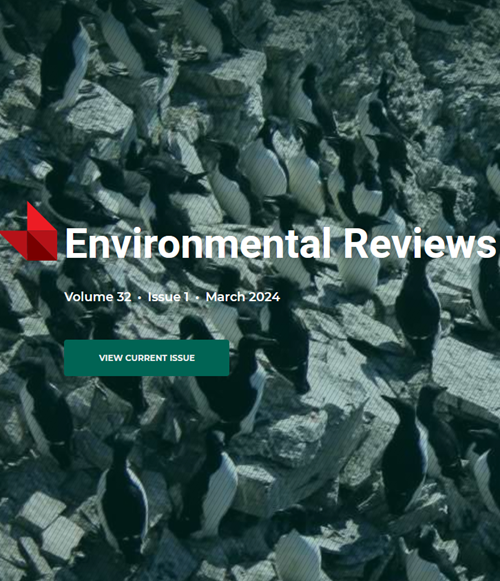A data compilation of antibiotic treatments in Canadian finfish aquaculture from 2016 to 2021 and the cumulative usage of antibiotics and antiparasitic drugs at marine sites.
IF 4.3
3区 环境科学与生态学
Q2 ENVIRONMENTAL SCIENCES
引用次数: 0
Abstract
Antibiotics can be introduced from aquaculture facilities into marine sediments where they may affect benthic communities and generate antimicrobial resistance (AMR). Antibiotics can be used in tandem with antiparasitics and the effects of their combined usage could affect AMR patterns and transmit antibiotic resistance genes. This study compiles patterns of antibiotic and antiparasitic drug usage from 2016-2021 in British Columbia, New Brunswick, Newfoundland and Labrador, and Nova Scotia (Canada) and compares them internationally. There is an overall reduction in rates of antibiotic use per fish produced in Canadian aquaculture sites from 2016-2021. Compared to other salmon-producing countries, Canadian antibiotic rates per ton of fish are lower than Chile, but higher, on average, than Norway and Scotland. Florfenicol (FLO) and oxytetracycline (OTC) are the prevalent antibiotics used in most salmon-producing countries including Canada. We also note that <30% of sites used two drugs per year, <18% of sites used three drugs with most of these sites using one antibiotic and one antiparasitic. There is an increase in FLO and a decrease use in OTC in Canada, which could be positive environmentally considering FLO's lower dose and environmental persistence. The East and West Coasts show comparable antibiotic rates with an average rate of 78 mg/kg in BC and 76 mg/kg in the Atlantic provinces, however, have differences in the type of antibiotic (average use of OTC: BC 38 mg/kg vs. Atlantic 214 mg/kg; average use of FLO: BC 40 mg/kg vs. Atlantic 10 mg/kg). Other distinctions between coasts include variation in the timing of treatments with seasonal use in the Atlantic provinces (May–November) and year-round use in BC. This pattern is likely influenced by differences in water temperature and subsequently, potential susceptibility to aquatic diseases. Disease prevalence and veterinarian choice/ preferred treatments are factors that we hypothesize may impact treatment choice; however, additional information is required to adequately comment on this point. This data compilation includes spatial descriptions that could be used for area prioritization for future studies.2016 年至 2021 年加拿大有鳍鱼类水产养殖业抗生素处理数据汇编,以及海洋场所抗生素和抗寄生虫药物的累计使用情况。
抗生素可能从水产养殖设施进入海洋沉积物,从而影响底栖生物群落并产生抗菌素耐药性(AMR)。抗生素可与抗寄生虫药物同时使用,它们的联合使用可能会影响 AMR 模式并传播抗生素耐药性基因。本研究汇编了不列颠哥伦比亚省、新不伦瑞克省、纽芬兰省和拉布拉多省以及新斯科舍省(加拿大)2016-2021 年抗生素和抗寄生虫药物的使用模式,并进行了国际比较。2016-2021年,加拿大水产养殖基地每条鱼的抗生素使用率总体下降。与其他鲑鱼生产国相比,加拿大每吨鱼的抗生素使用率低于智利,但平均高于挪威和苏格兰。氟苯尼考(FLO)和土霉素(OTC)是包括加拿大在内的大多数鲑鱼生产国普遍使用的抗生素。我们还注意到,小于 30% 的养殖场每年使用两种药物,小于 18% 的养殖场使用三种药物,其中大多数养殖场使用一种抗生素和一种抗寄生虫药物。在加拿大,福林的使用量有所增加,而非处方药的使用量有所减少,考虑到福林的低剂量和环境持久性,这在环境方面可能是积极的。东西海岸的抗生素使用率相当,不列颠哥伦比亚省的平均使用率为 78 毫克/千克,大西洋省份的平均使用率为 76 毫克/千克,但在抗生素类型上存在差异(OTC 的平均使用率:不列颠哥伦比亚省为 38 毫克/千克,大西洋省份为 214 毫克/千克;FLO 的平均使用率:不列颠哥伦比亚省为 40 毫克/千克,大西洋省份为 10 毫克/千克)。沿海地区之间的其他区别还包括治疗时间的不同,大西洋省份为季节性使用(5 月至 11 月),而不列颠哥伦比亚省则为全年使用。这种模式很可能受到水温差异的影响,进而影响对水生疾病的潜在易感性。疾病流行率和兽医选择/偏好的治疗方法是我们推测可能会影响治疗选择的因素;不过,还需要更多信息才能对此做出充分评论。本数据汇编包括空间描述,可用于确定未来研究的优先区域。
本文章由计算机程序翻译,如有差异,请以英文原文为准。
求助全文
约1分钟内获得全文
求助全文
来源期刊

Environmental Reviews
环境科学-环境科学
自引率
3.50%
发文量
45
期刊介绍:
Published since 1993, Environmental Reviews is a quarterly journal that presents authoritative literature reviews on a wide range of environmental science and associated environmental studies topics, with emphasis on the effects on and response of both natural and manmade ecosystems to anthropogenic stress. The authorship and scope are international, with critical literature reviews submitted and invited on such topics as sustainability, water supply management, climate change, harvesting impacts, acid rain, pesticide use, lake acidification, air and marine pollution, oil and gas development, biological control, food chain biomagnification, rehabilitation of polluted aquatic systems, erosion, forestry, bio-indicators of environmental stress, conservation of biodiversity, and many other environmental issues.
 求助内容:
求助内容: 应助结果提醒方式:
应助结果提醒方式:


